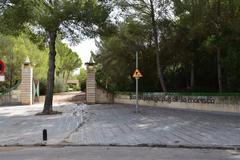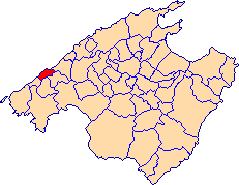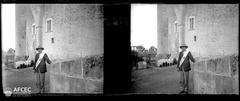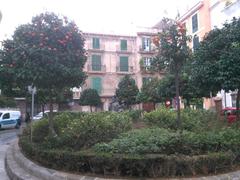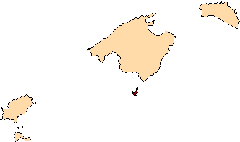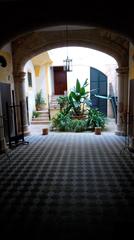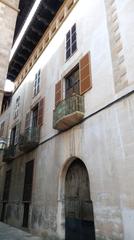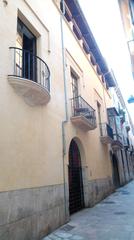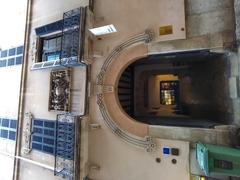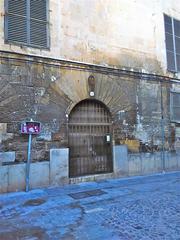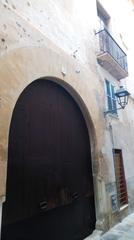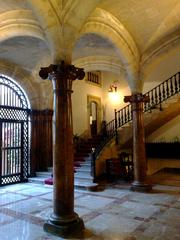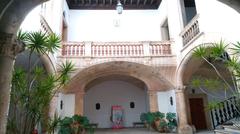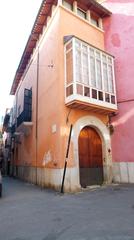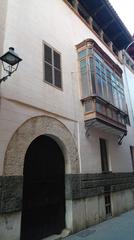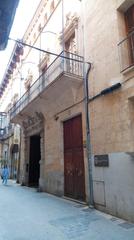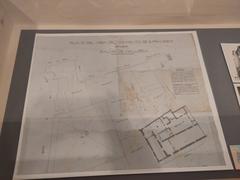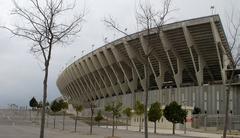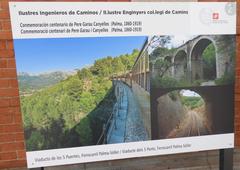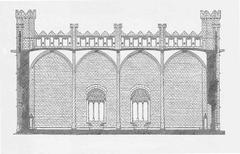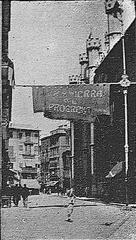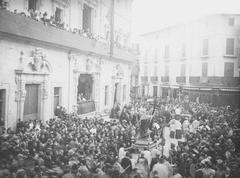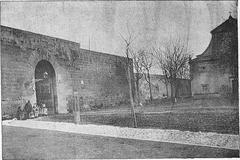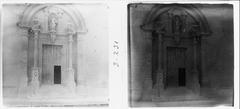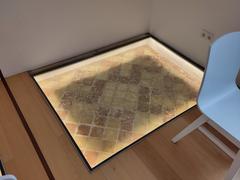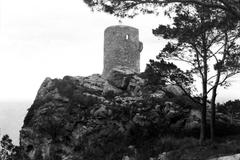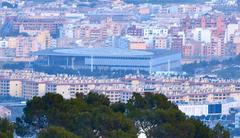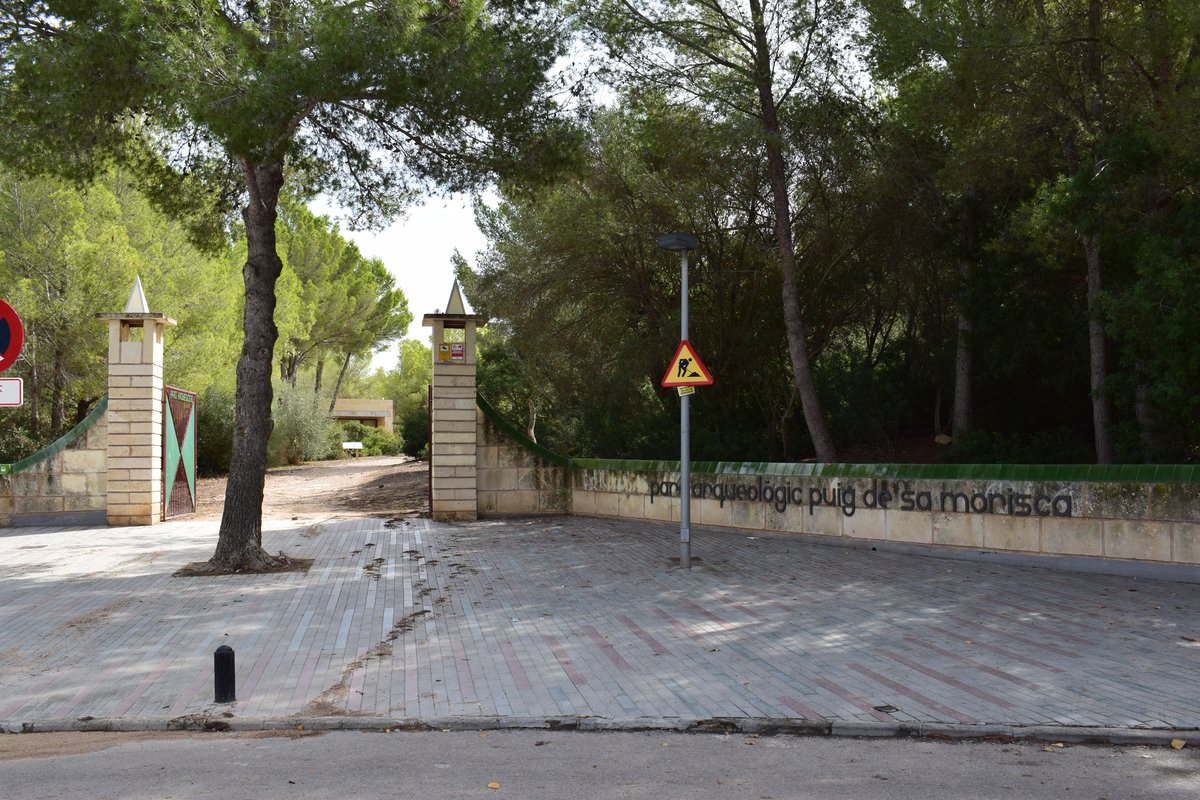
Comprehensive Guide to Visiting Puig De Sa Morisca Archaeological Park, Palma, Spain
Date: 17/08/2024
Introduction
Puig De Sa Morisca Archaeological Park, nestled in the picturesque town of Calvià near Palma, Spain, is a remarkable testament to the island’s rich and diverse historical tapestry. This site, spanning 35 hectares, offers an unparalleled glimpse into various epochs, from the prehistoric Talaiotic period to the Roman conquest, the Islamic era, and beyond (Mallorca Talaiots; Roman Conquest; Islamic Influence). The park’s historical significance is underscored by well-preserved talaiots, defensive structures, and artifacts that provide invaluable insights into the daily lives and cultural practices of its ancient inhabitants. Officially designated as an archaeological park in 2002, Puig De Sa Morisca today serves not only as a vital educational resource but also as a captivating destination for history enthusiasts and casual visitors alike (Modern Era). This comprehensive guide aims to equip potential visitors with everything they need to know—from the park’s history and significance to practical details like visiting hours, ticket prices, and travel tips, ensuring a memorable and enriching visit.
Table of Contents
- [Introduction](#introductionintroduction)
- [History and Significance of Puig De Sa Morisca Archaeological Park](#history-and-significance-of-puig-de-sa-morisca-archaeological-parkhistory-and-significance-of-puig-de-sa-morisca-archaeological-park)
- [Prehistoric Beginnings](#prehistoric-beginningsprehistoric-beginnings)
- [Roman Influence](#roman-influenceroman-influence)
- [Islamic Period](#islamic-periodislamic-period)
- [Medieval and Modern History](#medieval-and-modern-historymedieval-and-modern-history)
- [Visitor Information](#visitor-informationvisitor-information)
- [Tickets and Prices](#tickets-and-pricestickets-and-prices)
- [Opening Hours](#opening-hoursopening-hours)
- [Accessibility](#accessibilityaccessibility)
- [Travel Tips](#travel-tipstravel-tips)
- [Best Times to Visit](#best-times-to-visitbest-times-to-visit)
- [Nearby Attractions](#nearby-attractionsnearby-attractions)
- [Unique Aspects](#unique-aspectsunique-aspects)
- [Special Events](#special-eventsspecial-events)
- [Guided Tours](#guided-toursguided-tours)
- [Photographic Spots](#photographic-spotsphotographic-spots)
- [Visuals and Media](#visuals-and-mediavisuals-and-media)
- [FAQ Section](#faq-sectionfaq-section)
- [Conclusion](#conclusionconclusion)
- [Sources](#sourcessources)
History and Significance of Puig De Sa Morisca Archaeological Park
Prehistoric Beginnings
Puig De Sa Morisca Archaeological Park, located in Palma, Spain, is a site of immense historical significance, with its origins tracing back to prehistoric times. The park is home to numerous archaeological remains that date back to the Talaiotic period, approximately 1200-123 BC. This era is characterized by the construction of talaiots, which are megalithic structures believed to have served as watchtowers or communal gathering places. The presence of these structures indicates that the area was a significant settlement during the Bronze Age (Mallorca Talaiots).
Roman Influence
The Roman conquest of the Balearic Islands in 123 BC marked a new chapter in the history of Puig De Sa Morisca. The Romans established a military presence in the region, and the archaeological evidence suggests that the site was used for both strategic and residential purposes. Artifacts such as pottery, coins, and tools from this period have been unearthed, providing insights into the daily lives of the Roman inhabitants (Roman Conquest).
Islamic Period
The Islamic influence on Puig De Sa Morisca began in the 10th century when the Moors conquered the Balearic Islands. The site became part of the Islamic state of Al-Andalus, and its strategic location made it an important lookout point. The remains of Islamic structures, including a mosque and residential buildings, have been discovered, highlighting the site’s significance during this period. The Islamic period also saw the introduction of advanced agricultural techniques, which transformed the landscape and contributed to the area’s prosperity (Islamic Influence).
Medieval and Modern History
Following the Christian reconquest of Mallorca in 1229 by King James I of Aragon, Puig De Sa Morisca continued to play a vital role in the region’s defense. The site was used as a lookout point to guard against pirate attacks, which were common during the medieval period. The construction of watchtowers and fortifications during this time underscores the site’s ongoing strategic importance (Medieval History).
In the modern era, Puig De Sa Morisca has been recognized for its archaeological and cultural significance. The site was officially designated as an archaeological park in 2002, and extensive excavations have been conducted to uncover its rich history. Today, the park serves as a valuable educational resource, offering visitors a glimpse into the diverse cultures that have shaped the region over millennia (Modern Era).
Visitor Information
Tickets and Prices
Visitors to Puig De Sa Morisca can purchase tickets at the park entrance or online. Ticket prices vary, with discounts available for students, seniors, and groups. Please check the official website for the most up-to-date pricing information (Puig De Sa Morisca Tickets).
Opening Hours
The park is open daily, with varying hours depending on the season. During the peak tourist season, the park may offer extended hours to accommodate more visitors. It is advisable to check the official website for current visiting hours before planning your trip (Puig De Sa Morisca Visiting Hours).
Accessibility
Puig De Sa Morisca Archaeological Park is committed to making the site accessible to all visitors. There are paved pathways and ramps to ensure that individuals with mobility issues can explore the park comfortably. For detailed accessibility information, please visit the park’s official accessibility page (Accessibility Information).
Travel Tips
Best Times to Visit
The best time to visit Puig De Sa Morisca is during the spring and fall when the weather is mild and the crowds are smaller. Early mornings and late afternoons are ideal for exploring the park, as the temperatures are more comfortable.
Nearby Attractions
While visiting Puig De Sa Morisca, consider exploring other nearby historical sites and attractions in Palma. Some recommendations include the Palma Cathedral, Bellver Castle, and the Almudaina Palace. These sites offer additional insights into the rich history of the region (Palma Historical Sites).
Unique Aspects
Special Events
The park hosts various special events throughout the year, including historical reenactments, traditional music and dance performances, and cultural festivals. These events offer a unique way to experience the history and culture of the region.
Guided Tours
Guided tours are available for visitors who wish to gain deeper insights from knowledgeable guides. These tours provide a detailed exploration of the archaeological sites and their historical significance.
Photographic Spots
Puig De Sa Morisca offers numerous picturesque spots perfect for photography enthusiasts. The panoramic views from the hilltop, the ancient ruins, and the natural landscape provide stunning backdrops for memorable photos.
Visuals and Media
The park features high-quality images and videos that showcase the beauty and historical significance of Puig De Sa Morisca. Interactive elements such as virtual tours and maps are also available on the official website to enhance the visitor experience. Ensure to use appropriate alt tags with keywords for all visuals (Puig De Sa Morisca Visuals).
FAQ Section
Q: What are the visiting hours for Puig De Sa Morisca Archaeological Park?
A: The park is open daily, with varying hours depending on the season. Check the official website for the most current visiting hours.
Q: How much do tickets cost for Puig De Sa Morisca?
A: Ticket prices vary, with discounts available for students, seniors, and groups. Visit the official website for the latest pricing details.
Q: Are guided tours available?
A: Yes, guided tours are available and provide detailed insights into the archaeological sites and their historical significance.
Q: Is the park accessible for individuals with mobility issues?
A: Yes, the park has paved pathways and ramps to ensure accessibility for all visitors. For more information, visit the accessibility page on the official website.
Conclusion
By delving into the history and significance of Puig De Sa Morisca Archaeological Park, visitors can gain a profound appreciation for the diverse cultures and historical events that have shaped this remarkable site. Plan your visit today and explore one of Palma’s most intriguing historical sites. Stay updated on the latest events and news by following us on social media or downloading our mobile app Audiala. For more information on related posts, check out our other articles.
Sources
- Mallorca Talaiots, n.d., Retrieved from Mallorca Talaiots
- Roman Conquest, n.d., Retrieved from Roman Conquest
- Islamic Influence, n.d., Retrieved from Islamic Influence
- Modern Era, n.d., Retrieved from Modern Era
- Puig De Sa Morisca Tickets, n.d., Retrieved from Puig De Sa Morisca Tickets
- Puig De Sa Morisca Visiting Hours, n.d., Retrieved from Puig De Sa Morisca Visiting Hours
- Accessibility Information, n.d., Retrieved from Accessibility Information
- Palma Historical Sites, n.d., Retrieved from Palma Historical Sites
- Puig De Sa Morisca Visuals, n.d., Retrieved from Puig De Sa Morisca Visuals
- Related Articles, n.d., Retrieved from Related Articles
- TripAdvisor, n.d., Retrieved from TripAdvisor
- Google Reviews, n.d., Retrieved from Google Reviews
- Visit Calvià, n.d., Retrieved from Visit Calvià
- Illes Balears Travel, n.d., Retrieved from Illes Balears Travel
- Wikipedia, n.d., Retrieved from Wikipedia
- Wikiwand, n.d., Retrieved from Wikiwand
- Wanderlog, n.d., Retrieved from Wanderlog
